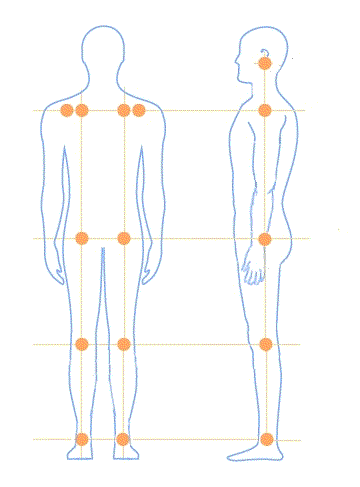
Your spine isn’t completely straight; it has a slight S-shaped curve
I recently met with a new client for his first session. His goal is to become stronger and reduce his back pain. When I explained that we’d be spending most of our first session establishing perfect posture and alignment, breathing patterns and core muscle activation he was dismayed. “I was really excited to start lifting weights,” he said. “What does my posture have to do with my workout?”
Short answer: Everything.
In yoga, we call our standing posture Mountain Pose. It’s the foundation of every standing or seated pose we do. In Pilates it’s referred to as Neutral Spine. Either way, your posture is simply the way you arrange your body when standing or sitting. When your bones and joints are aligned correctly, the right muscles are used properly to either stabilize or move you. This decreases stress on the ligaments that hold the joints of the spine together, reduces wear and tear on the joints and thus prevents backache and unnecessary muscle tension.
Poor posture has its repercussions. When we’re slumped over, our lungs can’t inflate and deflate fully, leading to brain fog and fatigue. Rounded shoulders contribute to upper back and neck pain. If your lower back sways inward excessively, it puts a lot of pressure on the lumbar spine, causing pain and discomfort. Now add weights to all that and you’re a spinal injury waiting to happen!

How’s your posture? Good posture is the foundation of a good workout
Perfect posture will also improve your appearance – immediately. You will appear taller, leaner and more confident instantly!
Achieving good posture might not be easy at first. It requires you to have good flexibility, strong and balanced postural muscles and most important of all an awareness of what good posture is. The good news is that just by practicing postural training exercises regularly, your muscles will eventually develop the flexibility and strength to hold your perfect posture longer.
 Here’s how you do it:
Here’s how you do it:
Stand with your feet hip-width apart and parallel. Lift your toes and spread them apart, then place them softly back down. With your weight balanced evenly on both feet, press them firmly down into the floor.
Lift the inner arches of your feet, activating the muscles that run along the inside of your legs. Point your kneecaps forward. Firm your thigh muscles to lift the kneecaps, engage your hamstrings to stabilize the back of the knee, and contract your buttocks slightly toward centre. Be sure your hip points and shoulders are level.
Imagine a line going all the way up the sides of your body from your ankles to your knees and hip bones, through the core of your torso to your shoulders, ears, and out through the crown of your head. Lengthen your tailbone toward the floor, pull your abdominal muscles inward as if tightening a wide belt, and lift your pubic bone toward the navel.
Turn your palms slightly outward. Press your shoulder blades into your back, then widen them across and release them down your back. Without pushing your lower front ribs forward, lift the top of your sternum straight toward the ceiling. Widen your collarbones.
Balance the crown of your head on the very top of your spine, with the underside of your chin parallel to the floor.
Take a few deep, relaxed breaths and allow this posture to slowly become familiar.
Practice this posture-perfecting exercise whenever possible. Try it when you’re sitting at your desk, standing in line at the grocery store or walking your dog. Eventually all that practice will reward you by becoming a very healthy, pain free, lifelong habit.

0 Comments